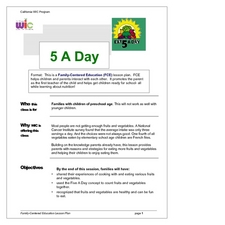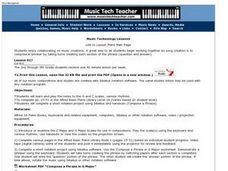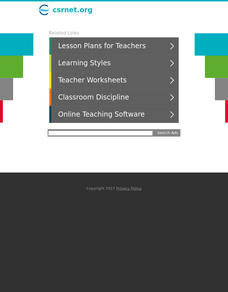Curated OER
Tapping the Trees-Traditional Oneida Song
Students practice singing the song, Tapping the Trees. They discuss the meaning in both the English and Oneida languages and how the words to this song demonstrate important feelings for the Oneida people.
Curated OER
Singing in the Round
Third graders experience different songs that are themed to match the seasons of the year. Each season will have a different song for the students to play non-pitched instruments, moving in rhythm and learning the pattern of a round.
Curated OER
A Musical Trip Across New Hampshire
Students plan a driving route that includes directions, route number, and landmarks. They present their directions to a simple well-know tune such as; Jingle Bells, Baa-Baa Black sheep, etc.
Curated OER
Music Technology
Young scholars practice using keyboard and sequencing software to expand their compositions. They use the notes in the C Major Scale and playback their song written in an ABA song form. They complete pages in a basic piano workbook and...
Curated OER
5 A Day
Students examine the 5 a day program. They sing different songs and discover how to be healthy. They identify different parts of the music as well.
Curated OER
Looking for a Walrus
Students perform the "Looking for a Walrus" song while role-playing to show their awareness of walrus adaptations. They study the words and add motions to the song.
Curated OER
Chick Corea and Nicolas Economou: "Songs for Children"
Students study the career of Chick Corea, whose work has spanned myriad styles in the past thirty years. They explore the double meaning of "Children's Music" and are introduced to the piano
Curated OER
Musical Form and Sibelius Groovy Music Shapes
Young scholars create a song using the form ABACADAEA. Students listen to a musical piece created by Vivaldi that is an example of this musical form. Then
young scholars use software to create their own musical forms representing this...
Curated OER
Retrograde Composition
Students complete their own retrograde composition. They finish playing a set of notes started by their teacher. They use computer software to complete their song.
Curated OER
Music Technology
Students identify the features of a synthesizer and practice using them. They record different sounds using the software provided. They also examine sound waves and applications through the synthesizer.
Curated OER
Music Creations
Students practice playing notes on the G and C scales in different rhythms. They complete worksheets and discuss the answers. They finish a short notation project as well.
Curated OER
WebQuests
Students work together or individually to complete a WebQuest. They gather information on topics related to music. They also practice their piano lessons in class.
Curated OER
Sing a Shaker Song
Second graders study the Shakers of the 19th century and practice a traditional Shaker song, complete with dance motions.
Curated OER
Songs
Second graders study four American songs that they will sing during the month of February. They discuss the origins and meanings of the songs.
Curated OER
Songs
Second graders practice singing the chorus of a Scottish ballad. They also sing two American folk songs in class. They are encouraged to use the correct pitch while singing.
Curated OER
Music Lesson on Rhythm
Students listen and examine two musical pieces. They draw pictures about what the music makes them think about. They examine how their pictures are different from slow tempo to fast tempo music.
Curated OER
Opposites
First graders discover opposites in books, songs and discussions. They are read a story about opposites and discuss some opposites they are aware of in their life.
Curated OER
Teaching Adjectives With Music
Third graders use adjectives to describe objects in a bag. They share which words they used with their classmates. They write adjectives to describe the types of music they listen to as well and share with their classmates again.
Curated OER
Beginning, Middle and Ending
First graders identify the beginning, middle and ending of the story "Where the Wild Things Are". They also listen to different songs and identify the beginning, middle and ending. They create their own story and identify the different...
Curated OER
Just a Closer Walk with Thee, Dirty Brass Band
Students investigate the music played by New Orleans brass bands in funerals. The two distinct moods, sad and happy, utilized in the songs are identified and applied to other music selections.
Curated OER
Birdland: Weather Report
Students compare and contrast the Weather Report jazz recording, Birdland, with other songs they have reviewed. They write in their journals how they think charlie Parker might have reacted to the song.
Curated OER
Jam Sessions
Students examine the connection between sense of humor and jazz improvisation by identifying the musical instruments imitated by comedian Bill Cosby. They listen to another recording by Clark Terry and write what they think he might be...
Curated OER
Feelin; a Groove
Young scholars compare and contrast two versions of April in Paris. They discuss the songs in terms of the grooves each one captures and identify the instruments responsible for creating them.
Curated OER
Bravo!!
Second graders study and experiment with rhythm and sound. In pairs, they practice reading and performing simple melodies from sheet music. Individually, they choose one piece to perform for the class.

























